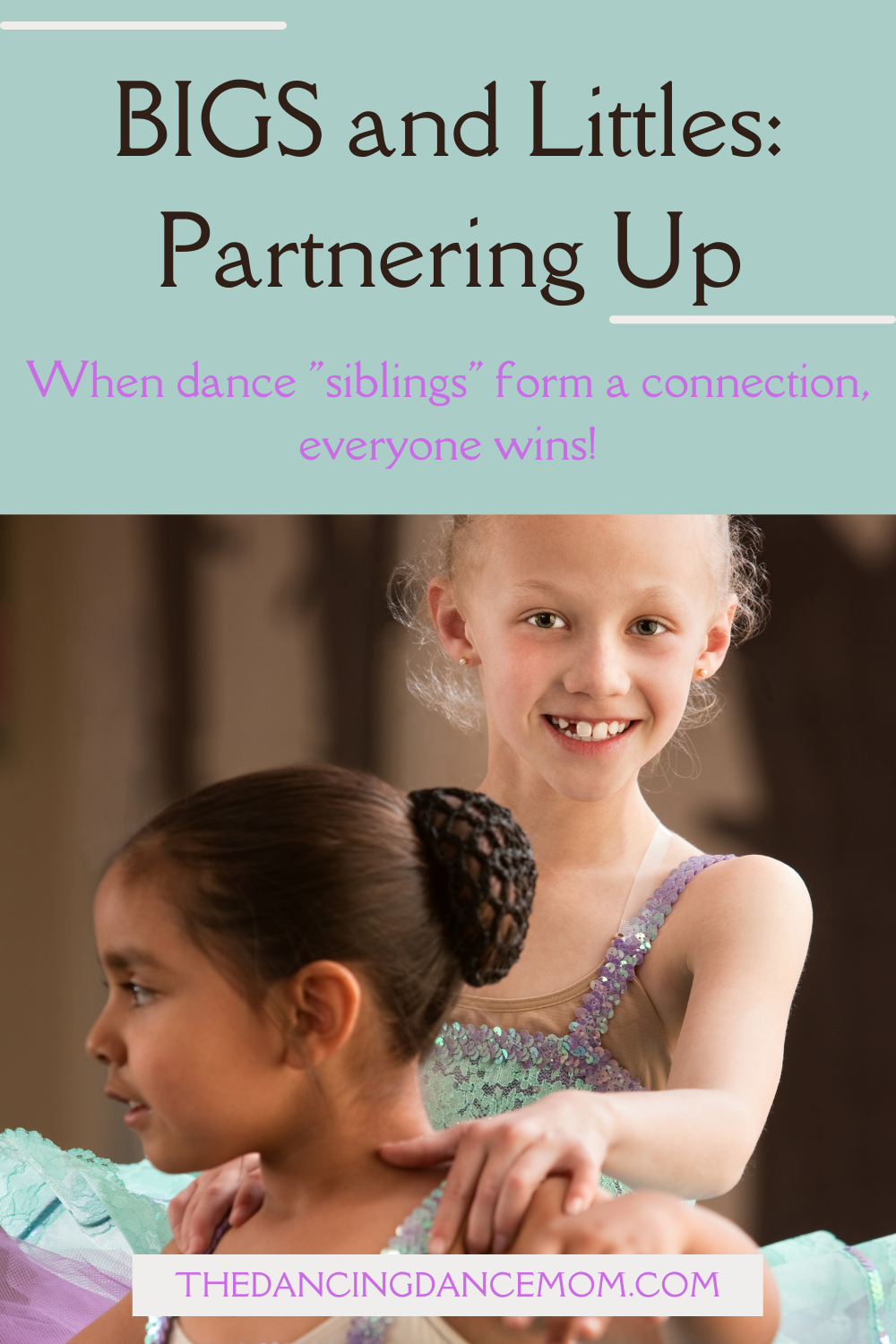
Bigs and Littles – Partnering Up
Because of the sheer amount of hours that our kids spend in the studio, many refer to their teammates as their “dance family.” If you add up the hours that your daughters/sons spend in the dance school or at dance events, you might be surprised to find that they log more waking hours with their team than with you! That is one of the reasons why it is so important that the dancers form bonds with each other. After all, a team that feels “connected” to one another is more likely to pull their own weight (and help others) for the good of the group.
To foster a feeling of camaraderie, many directors and teachers use a “Bigs and Littles” program within their competition team. On the Facebook page for The Dancing Dance Mom, I published a poll to gauge how many dancers had a Big/Little program of some sort at their studios. Out of 59 responses, 46 (78%) indicated that their school had some form of one (you can see the original post here). While this is just a small sampling, it could indicate how popular these programs are.
The Nuts and Bolts
Of course, there are countless variations of what this looks like in individual dance studios. While some schools pair individual dancers together and have structured activities for the partners to engage in, others prefer a looser, more informal structure. So this post is not meant to serve as an exhaustive list of all the variations of a Big/Little program; there are far too many factors that shape each school’s approach.
The staff may have a specific objective when creating and implementing a Big/Little program, like giving each of the newer and/or younger kids (“Littles”) a reliable, experienced veteran (“Big”) that they can depend on when they are in unfamiliar territory. Secondly, the Big can serve as a role model for the Little to look up to. Or staff members may have such a program in place simply because it is a long-standing tradition in the school. Whatever the reason, team members can achieve positive outcomes when they make the most of their Big/Little experience.
Learning the Ropes
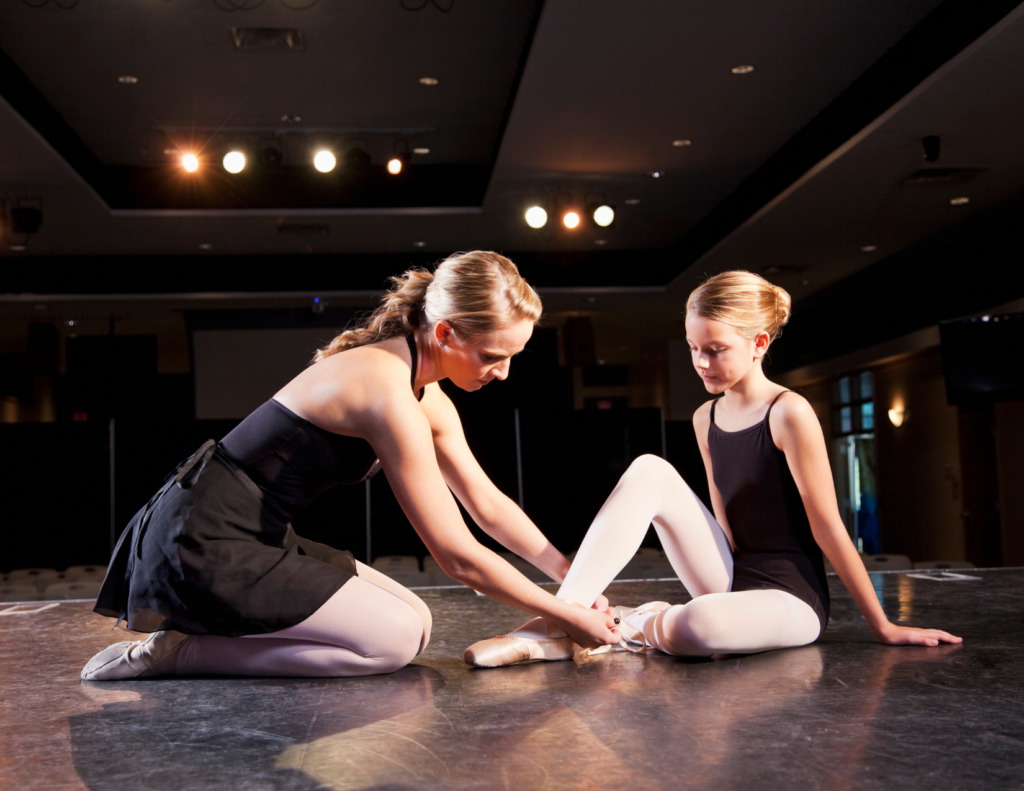
New members (and their parents) have a fairly steep learning curve to tackle when they first join the dance team. For Pee Wees (or whatever the youngest class is called at your dance school), this is probably their first experience with a company. It might be their first time being a part of any team whatsoever, so they could have that much more to learn!
Even experienced dancers that enter the school as older students can benefit from a partnership, since all studios have their own sets of procedures and expectations. Pairing these rookies with a veteran team member provides the new family with a resource they can reach out to in times of uncertainty.
At the first-ever competition, my girls’ Bigs approached me to tell me that they would take the twins onto the stage for the awards ceremony. Naturally, I was a little thrown off (and inwardly relieved, albeit somewhat guiltily, that someone else was taking charge of my rambunctious 5 year-olds). Since it was our first awards ceremony, having someone show my girls where to go and what to do was invaluable.
Also, I have asked the Bigs’ moms for guidance and advice about the procedures and expectations of various aspects of company life (what to buy to pack their things into, information about upcoming venues, and more). Experienced dance families that are willing to show you the ropes can be lifesavers, and can help take some of the burden off of the school staff when it comes to getting everyone organized and ready.
Role Models
Whether they are first-year dancers, younger kids, or older transfers, all students that fit in the “rookie” category will benefit by having role models to look up to within the team. A thoughtful director will make careful matches to get the most out of both students in the pair. Of course, the Littles can look to their Big as someone to emulate. But the Big will benefit too; knowing that a junior member of the team is watching them can inspire the Bigs to conduct themselves more responsibly and with a higher degree of maturity.
Teambuilding
A team that functions as a cohesive, bonded unit will have a much more rewarding experience than one that is fragmented or disjointed. Directors can build their company’s sense of connection with a Big/Little program, which provides a built-in “buddy” for each dancer. I’ve seen instances when two or more Bigs were friends, and their corresponding Littles would then form relationships. This can have a multiplying effect, which has the potential to spread to the majority of the team.
Out of Their Shells
When the two partners in a Big/Little pairing are quiet, one might assume that they harbor ill feelings towards one another. This isn’t always the case! It could simply be that both kids naturally tend towards being more withdrawn or introverted. If that is true, you could help them to open up to each other by arranging private get-togethers.
For example, take them both for ice cream or some other sweet treat (you and the other parent can sit at a different table), go to a park or movie, or drive them to some other outing. Or you might invite the partner over to your home to play some non-dance related games, watch a show, or make a craft for each other. When their comfort levels with each other grow, they will be more likely to open up and come out of their shells.
When Big and Little Don’t “Mesh”
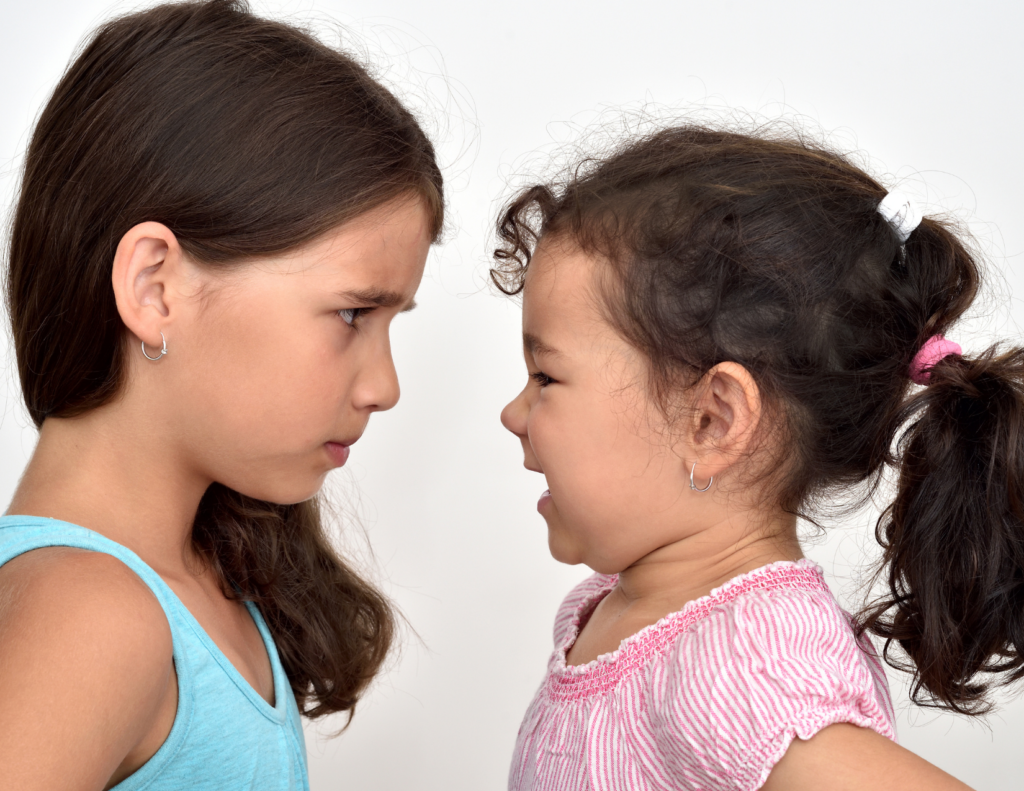
Listen, it happens. Despite the best efforts and intentions of the company director, there may be instances when a Big and a Little just don’t “click” with each other. In cases such as these, the best course of action might be to simply remind your kids that they are going to be dealing with all types of people throughout their lives.
While they don’t need to be BFF’s, they do need to learn to coexist with some degree of tolerance and courtesy. Learning how to work well with others, especially those that we don’t quite connect with, is an essential life skill. Without it, one could be passed over for opportunities that could open new doors.
By no means should you allow your child to be bullied, harassed, insulted, or intimidated, however. If the relationship is antagonistic or harmful in any way, the studio director (or whoever is in charge of the Big/Little program) should be made aware immediately. Minor issues could potentially be resolved between the two families, but carefully consider how your concern might be met by the other parents/guardians if you go to them directly. On the other hand, going straight to the director might create feelings of resentment or betrayal. You’ll need to weigh multiple factors before making a decision about how to handle a conflict.
Our Experience
To provide some examples, I’ll draw on our experience at my daughters’ dance school. To start, the Bigs of the company are assigned a Little (the Little doesn’t know who their Big is). A couple of weeks before our first competition, the Bigs prepare a craft or some other fun activity that will be used during the “reveal” at the team’s annual party. Once the Bigs reveal themselves, they sit down with their Littles to get to know each other by answering some general questions.
For our first exchange (before the first competition), the kids give each other a stuffed animal that they can take to dance events. Also, they write each other a good luck letter with words of encouragement. Somehow, a mass of candy and other sweet treats find their way into the gift bags as well (gee, I wonder…). Throughout the rest of the season, they continue to exchange small gifts and letters before each competition. At nationals, the Big and Little pairs complete a scavenger hunt together. Over the years, my girls have had some wonderful experiences with their dance sisters, and look forward to doing it again each year.
Make It Happen
If your studio doesn’t have a Big/Little program, consider mentioning it to your studio director or company manager! The worst that could happen is that they reject the idea. But if they accept it, you will have helped to usher in a new era of team bonding and connection and the lifelong memories that go with it.
For a cute keepsake, you can have custom matching shirts made for the dance buddies! Bright Side NJ has some great options – you can order here.
When teammates compete against each other, it can affect their entire dynamic. Read about how it happens (and how you can handle it) in Friendly Fire.

Dance Mom Dictionary
You May Also Like
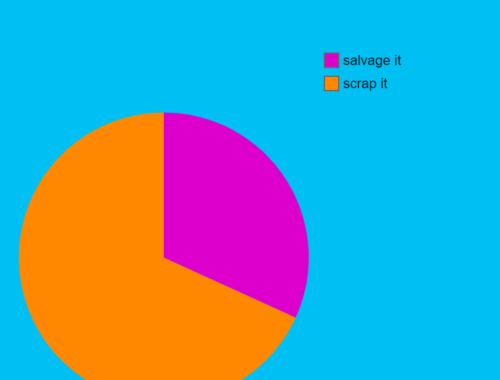
Scrap It or Salvage It?
May 23, 2020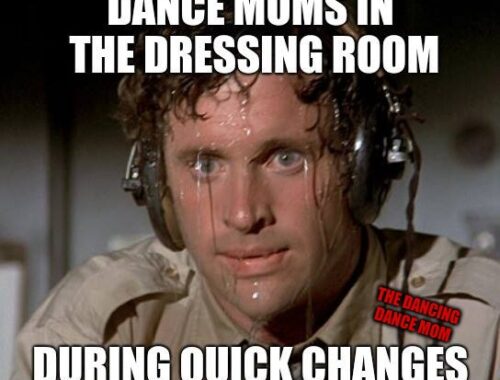
The Art of the Quick Change
May 20, 2021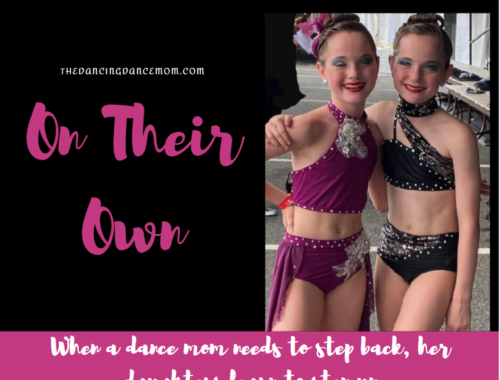


13 Comments
Maria Khan
amazing post!
Susan
Some of my fondest childhood memories were in my local dance studio! As a teenager, being asked to partner as an “assistant instructor” with the preschool class was an absolute dream come true.
I love how your studio runs the “Little” / “Big” program. How wonderful to forge a connection in the dance world that way.
Sabrina
This is a wonderful idea for creating a great mentor program. Bigs helping smalls can lead to mentors in training. Loved this idea because it fosters a family feeling in a very competitive arena. What a wonderful experience for your girls.
Lisa Manderino
This is a great idea for building team relationships. This would be great to implement in a studio!
Chelsea
It’s so beneficial for kids to learn from other kids, so a big/little program is a fantastic idea. My daughter loves this in the gymnastic program she’s currently in. And my son experiences something similar in Scouts. But you’re right, I can see it going wrong too. But it definitely has the potential to be a positive experience for both the big and the little.
Tammy Horvath
The Big/Little program sounds very popular, based on your poll. I can see how it is beneficial because teambuilding is so important.
Terra Booth
I love this idea! It really does help the little ones to have a role model and mentor! And it also teaches the older kids so much as well!
Tiffany
I think mentor programs like this are so helpful to everyone involved 🥰
Barbara
Whether dance or any other sports. Pairing up experience with a newby is always going to be an excellent idea!
Sabrina DeWalt
This looks like a great program.
Melissa Jones
I love it when older kids work with younger ones! It’s a learning experience for all involved!
Suzan
Kids learn so well from their older peers. This is a wonderful learning experience for all.
Cindy Moore
This sounds like such a helpful program for new dancers and experienced ones!